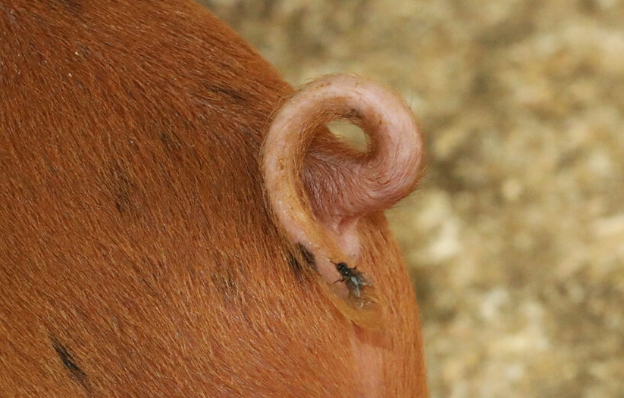The 2008 EU directive requires producers to not tail dock on a routine basis and to implement measures to prevent tail biting behaviour from becoming established within the farm.
From a behaviour and welfare standpoint, maintaining intact tails prevents pigs from experiencing acute and chronic pain associated with the procedure, and prevents pain experienced from tail biting if the environment is well managed and tail biting behaviour is not performed.
Additional studies have also shown that damaged tails from tail biting can impact animal health, with increases in minor lung lesions found at slaughter.
Taking all this information into account, it would seem like maintaining intact tails in pigs that are properly managed from an environmental standpoint would be a major win for both pig health and welfare.
But is that the entire picture?
Unlike previous work evaluating differences in tail lesion severity at slaughter, scientists from the University of Torino and Padova assessed slaughter lesions between pigs that were tail docked or had their tail intact. A total of 525 batches of pigs (~100 pigs/batch) were evaluated at slaughter (442 docked, 82 undocked) and monitored for tail, lung, liver, stomach, carcass and thigh lesions.
Upon evaluation, 44% of undocked batches had tail biting lesions ranging from mild to severe compared to 0.2% of tail docked batches demonstrating only mild lesions. Thus, showing that pigs with undocked tails had a higher frequency of tail lesions, both chronic and fresh, than docked pigs.
In addition to tail lesions, severe lung lesions (9.2% undocked vs 6.6% docked), and gastric ulcers (26.1% undocked vs. 20.1% docked) were also more commonly found in undocked batches compared to docked batches.
More work is needed
Results from this study suggest that the association between pig tails and health is not so clear. As one of the first papers to compare slaughter lesions between docked and undocked pigs, more work is needed to understand not only how to better manage tail biting in undocked systems, but how maintaining undocked tails is impacting long-term health for these pigs.
PigUA.info by materials pigprogress.net



